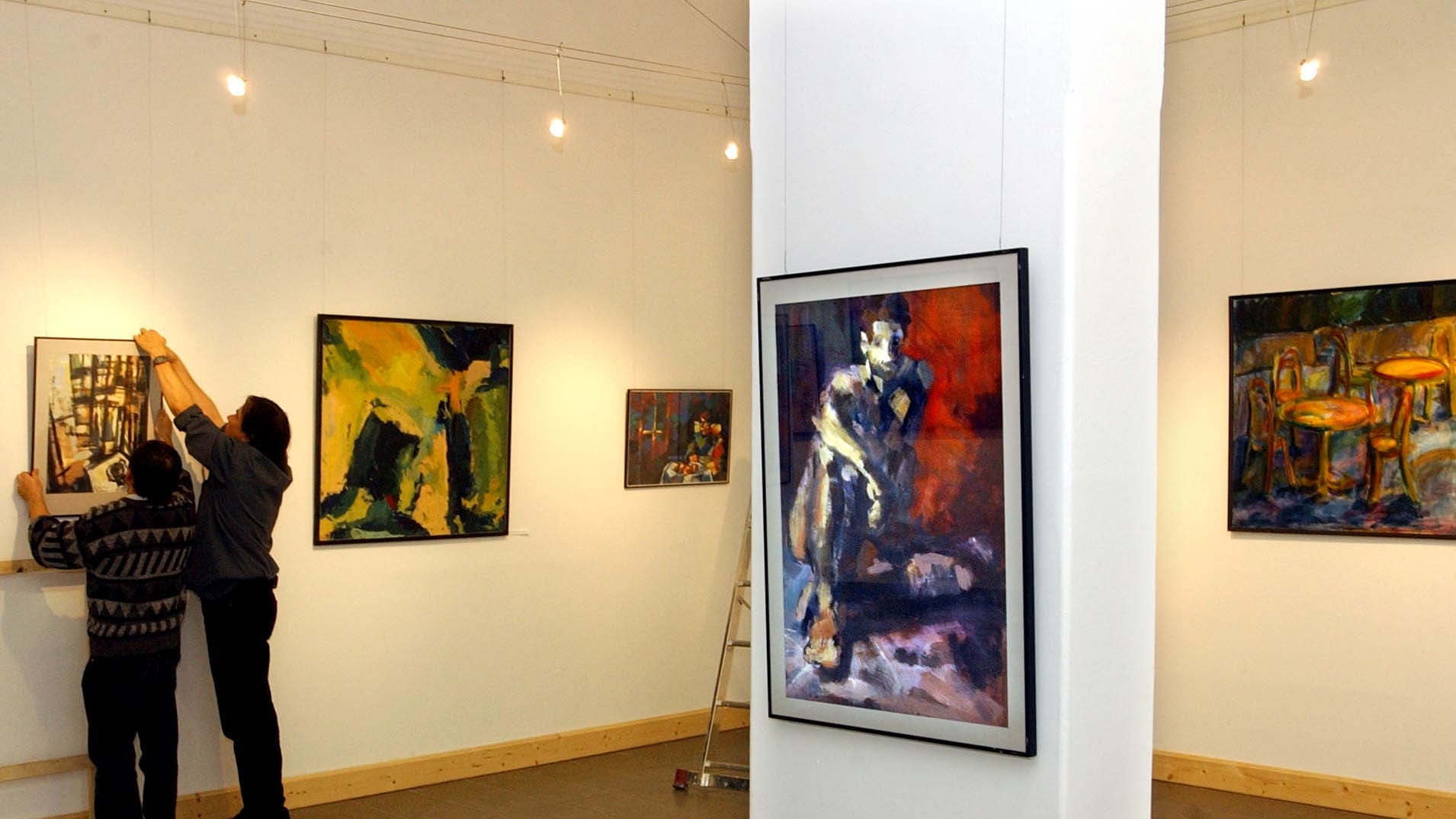An exhibition featuring the artworks of two former leaders of the Department of Art and Art History at the University of Szeged, Ernő Fischer and László Vinkler, painters and graphic artists, opened in Szeged on Thursday.
At the opening of the exhibition, which will be on display for four weeks at the Art and Art History Department at the University of Szeged, art historian Anna Váraljai stated that Fischer and Vinkler had been charismatic teaching figures, but they had also been connected by their ‘habitual drawing’ practice.
In their work, a similarity can be observed in the motif of upward striving, which takes the form of towers, cathedrals, or sails in Fischer’s paintings, while appearing as Greek columns in Vinkler’s works, the curator observed. The exhibition, which provides an overview of the creative periods of the two artists, primarily features materials from the Museum of Móra Ferenc, with some artworks on loan from private collectors in addition to paintings owned by the university, the expert added.
Born in 1912 in Szabadka (today Subotica, Serbia), Vinkler lived and worked in Szeged from the 1920s onward, becoming a defining figure in the region’s fine arts. He initially gained professional success with his brilliant portrait painting skills; a love for this genre permeated his entire body of work. He established the Department of Art and Art History at the Juhász Gyula Faculty of Education at the University of Szeged in 1947, which he led for ten years, but was then removed from his leadership position due to political reasons. Despite difficulties concerning his pedagogical work, his painting career continued unabated, and he resumed his role as department head in 1974–75. Anna Váraljai elaborated on the fact that
Vinkler’s work is characterized by stylistic diversity,
which, alongside his experimental spirit and boldness, can likely be attributed to him being a teacher. He promptly responded to contemporary American trends in his work, showing his students innovative surface solutions at a time when such examples were inaccessible in Hungary.
Fischer, born in 1914 in Losonc (today Lučenec, Slovakia) pursued his artistic studies in Prague and later in Budapest. In 1953, he established the Tokaj Artist Colony, which he led for many years. He taught in Szeged from 1959, leading the Department of Art and Art History for ten years from 1964. He was not only an educator but also characterized his own professional career by continuous learning, often creating joint artworks with his students. Although he held his first solo exhibition at nearly 50 years old, he quickly found his unique thematic and stylistic character. Mythological and biblical themes occupied him from the beginning, not to mention his landscape and maritime visions, along with his interest in circuses and merry-go-rounds. According to art historian Pál Szuromi,
Fischer was ‘one of the most outstanding representatives of lyrical abstract painting in Hungary’.
On the occasion of the opening of the exhibition, the ground-floor gallery of the department was named after László Vinkler, while the upstairs gallery has borne the name of Ernő Fischer since 2003.
Related articles:
Sources: Hungarian Conservative/SZTE/MTI







